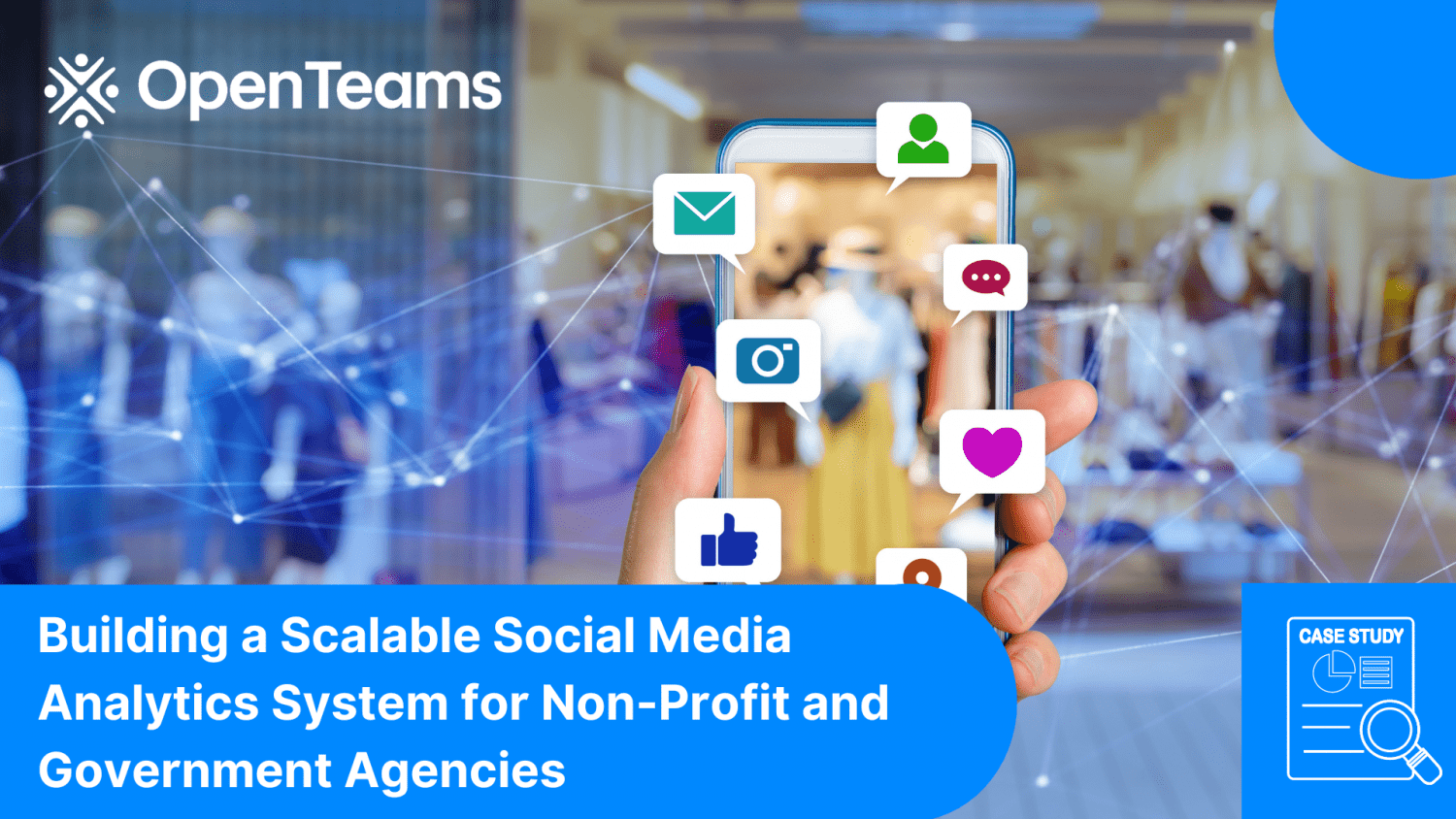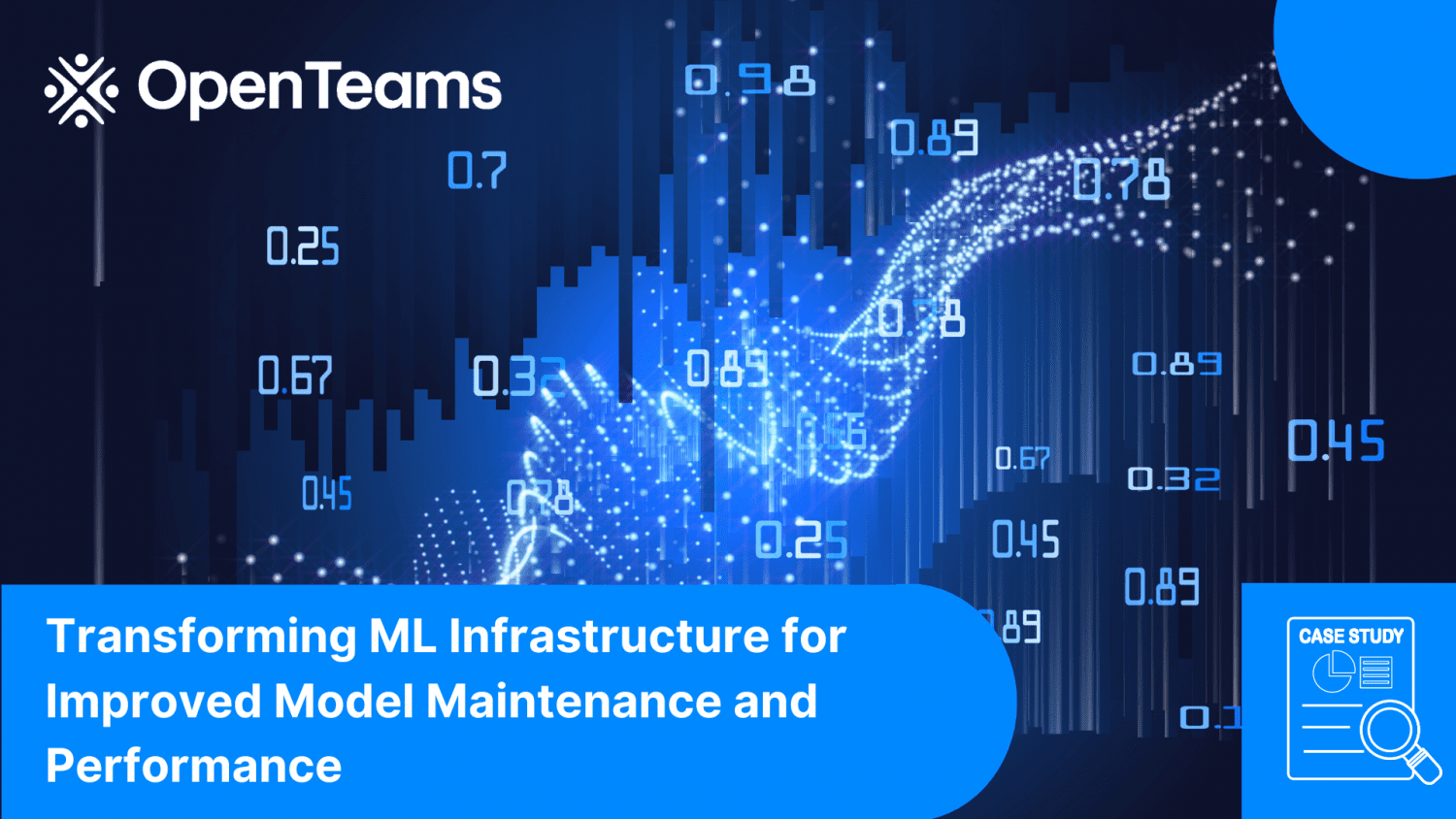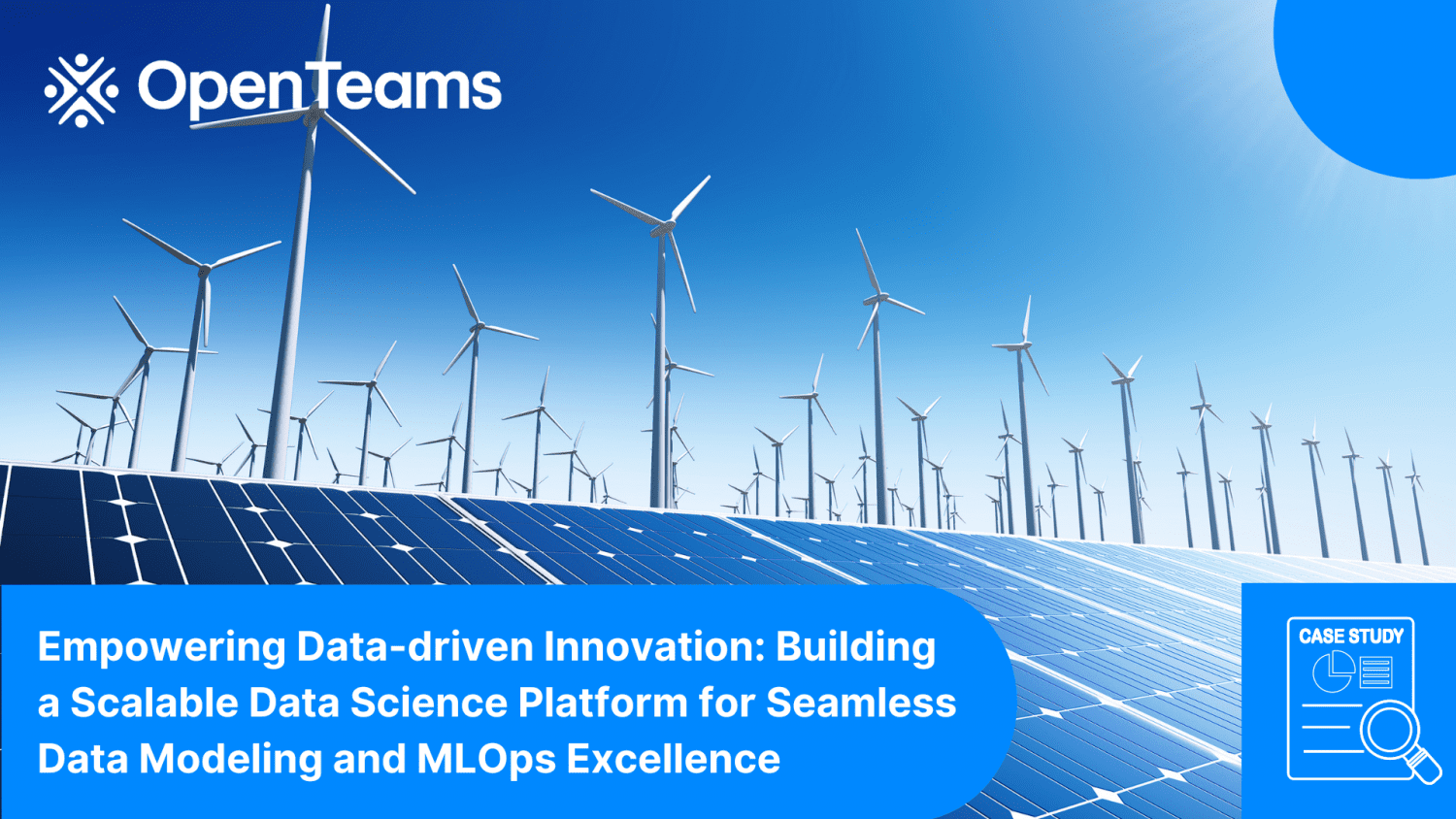
The field of Artificial Intelligence (AI) and Machine Learning (ML) has seen remarkable growth in recent years, shaping various industries and transforming the way we interact with technology. Open-source technologies have played a pivotal role in democratizing AI/ML, making cutting-edge tools accessible to developers and researchers worldwide. In this article, we will explore 100 open-source AI and ML technologies that are driving innovation and advancement in the field. Let’s delve into the list and discover why they are used.
- AllenNLP (https://allennlp.org/): AllenNLP is an open-source natural language processing library built on PyTorch, offering pre-trained models and tools for NLP tasks.
- Anaconda (https://www.anaconda.com/): Anaconda is a comprehensive data science platform, offering a distribution of Python and R, along with numerous pre-installed data science packages.
- Apache Airflow (https://airflow.apache.org/): Apache Airflow is a platform for programmatically authoring, scheduling, and monitoring workflows, commonly used for orchestrating ML pipelines.
- Apache Arrow (https://arrow.apache.org/): Apache Arrow is a cross-language development platform for in-memory data processing, making it efficient to move data between different frameworks.
- Apache Beam (https://beam.apache.org/): Apache Beam is an open-source unified model for defining batch and streaming data processing pipelines, widely used in data preprocessing for ML.
- Apache Druid (https://druid.apache.org/): Apache Druid is a high-performance, real-time analytics database, often used for exploring and analyzing large datasets in ML applications.
- Apache Flink (https://flink.apache.org/): Apache Flink is a powerful stream processing framework, often used for real-time data processing and analysis in ML pipelines.
- Apache FlinkML (https://flink.apache.org/ml/index.html): Apache FlinkML is an ML library built on top of Apache Flink, enabling scalable, distributed machine learning tasks.
- Apache Iceberg – (https://iceberg.apache.org/): Apache Iceberg is an open-source data table format for large-scale data analytics that aims to provide better performance, manageability, and query capabilities.
- Apache Kafka (https://kafka.apache.org/): Apache Kafka is a distributed event streaming platform, widely used for handling real-time data streams in ML applications.
- Apache MXNet (https://mxnet.apache.org/): Apache MXNet is an open-source deep learning framework for training and deploying neural networks, providing high scalability.
- Apache NiFi (https://nifi.apache.org/): Apache NiFi is a data integration and dataflow automation tool, ideal for managing data pipelines and real-time data ingestion in ML projects.
- Apache Pulsar (https://pulsar.apache.org/): Apache Pulsar is a distributed messaging and event streaming platform, commonly used for real-time data processing in ML applications.
- Apache Spark (https://spark.apache.org/): Apache Spark, a distributed computing system, provides MLlib, a library for scalable machine learning and data processing, making it ideal for handling big data.
- Apache SystemML (https://systemml.apache.org/): Apache SystemML is a scalable ML system that automatically scales algorithms to big data, often used for large-scale distributed ML tasks.
- Apache Zeppelin (https://zeppelin.apache.org/): Apache Zeppelin is a web-based notebook for data exploration and visualization, providing an interactive environment for data analysis in ML projects.
- BERT (https://github.com/google-research/bert): BERT (Bidirectional Encoder Representations from Transformers) is a pre-trained transformer model by Google, known for its state-of-the-art performance in various NLP tasks.
- Bokeh (https://bokeh.org/): Bokeh is a powerful Python library for interactive data visualization, facilitating clear communication of insights from AI experiments.
- Caffe (https://caffe.berkeleyvision.org/): Caffe is a deep learning framework that specializes in image recognition tasks, often employed in computer vision applications.
- Caffe2 (https://caffe2.ai/): Caffe2 is a lightweight, modular deep learning framework, designed for mobile and embedded devices, ensuring AI deployment in resource-constrained environments.
- CaffeOnSpark (https://github.com/yahoo/CaffeOnSpark): CaffeOnSpark is a deep learning framework for distributed processing on Apache Spark, supporting large-scale ML tasks on Spark clusters.
- Chainer (https://chainer.org/): Chainer is a flexible and powerful deep learning framework in Python, known for its dynamic computation graph, making it a favorite among researchers and developers.
- Conda (https://conda.io/): Conda is a package manager widely used for managing Python environments and dependencies in AI and ML projects.
- CoreML (https://developer.apple.com/documentation/coreml): CoreML is a framework by Apple that enables developers to integrate trained ML models into iOS, macOS, watchOS, and tvOS apps, enhancing user experiences.
- Cortex (https://github.com/cortexlabs/cortex): Cortex is an open-source platform for deploying and managing machine learning models in production, simplifying the process of serving and scaling ML models.
- Dask (https://dask.org/): Dask is an open-source parallel computing library, ideal for scalable ML tasks and distributed computing on large datasets.
- Deeplearning4j (https://deeplearning4j.konduit.ai/): Deeplearning4j is an open-source deep learning library for the Java Virtual Machine (JVM), suitable for Java-based ML projects.
- Dlib (http://dlib.net/): Dlib is a C++ library with Python bindings, offering a wide range of machine learning algorithms and tools for facial recognition, object detection, etc.
- DVC (https://dvc.org/): DVC (Data Version Control) is a version control system for data science and ML projects, enabling easy management of datasets and models.
- ElasticSearch (https://www.elastic.co/): ElasticSearch is a distributed, full-text search engine, often used for text-based data analysis and information retrieval in AI applications.
- ELKI (https://elki-project.github.io/): ELKI is an open-source data mining framework, useful for clustering and outlier detection in ML projects.
- FastAPI (https://fastapi.tiangolo.com/): FastAPI is a high-performance web framework for building APIs, often used for deploying ML models as RESTful web services.
- Flask (https://flask.palletsprojects.com/): Flask is a lightweight web framework in Python, commonly used to deploy ML models as web applications.
- Gensim (https://radimrehurek.com/gensim/): Gensim is a Python library for topic modeling and document similarity analysis, essential for natural language processing tasks.
- GluonCV (https://gluon-cv.mxnet.io/): GluonCV is an open-source computer vision toolkit built on Apache MXNet, offering pre-trained models and tools for various computer vision tasks.
- GluonNLP (https://gluon-nlp.mxnet.io/): GluonNLP is an extension of Apache MXNet, providing tools and pre-trained models for natural language processing tasks.
- H2O (https://www.h2o.ai/h2o/): H2O is an ML platform with automatic ML and driverless AI capabilities, simplifying the process of building, training, and deploying models.
- Horovod (https://horovod.ai/): Horovod is an open-source distributed training framework by Uber, making it efficient to train ML models on large-scale clusters.
- Hugging Face Transformers (https://huggingface.co/transformers/): Hugging Face Transformers offers pre-trained models and tools for natural language understanding, sentiment analysis, translation, and more.
- IPython (https://lpython.org/): IPython is an interactive computing environment that provides a powerful and user-friendly interface for data analysis, visualization, and interactive programming with Python.
- Jina (https://jina.ai/): Jina is an open-source neural search framework, empowering developers to build scalable and distributed search systems using deep learning.
- Jupyter (https://jupyter.org/): Jupyter is an interactive notebook environment, providing a web-based interface for executing code and visualizing data, essential for data exploration and model prototyping.
- Jupyter Notebook (https://jupyter.org/): Jupyter Notebook offers an interactive web-based environment for data analysis, exploration, and visualization, making it a favorite for AI and ML researchers.
- Keras (https://keras.io/): Keras is a high-level neural networks API that serves as a user-friendly interface for building deep learning models, often backed by TensorFlow or Theano.
- Kibana (https://www.elastic.co/kibana): Kibana is an open-source analytics and visualization platform, providing real-time insights and visualizations for ML projects.
- KubeFlow (https://www.kubeflow.org/): KubeFlow is an open-source ML platform built on Kubernetes, providing end-to-end capabilities for ML workflows in a containerized environment.
- LangChain (https://github.com/langchain-ai/langchain): LangChain is a versatile framework for creating data-aware and agentic applications powered by language models, offering modular components and pre-built chains to simplify development and customization.
- LightGBM (https://lightgbm.readthedocs.io/): LightGBM is a fast and efficient gradient boosting framework, known for its high accuracy and speed, often used for classification and regression tasks.
- Ludwig (https://ludwig-ai.github.io/ludwig-docs/): Ludwig is an open-source deep learning toolbox, making AI accessible to non-experts and simplifying model building and training.
- Matplotlib (https://matplotlib.org/): Matplotlib is a popular Python plotting library used to create visualizations and graphs for analyzing data and model performance.
- ML.NET (https://dotnet.microsoft.com/apps/machinelearning-ai/ml-dotnet): ML.NET is an open-source ML framework by Microsoft, designed for .NET developers, allowing easy integration of ML models in .NET applications.
- ML.NET Model Builder (https://dotnet.microsoft.com/apps/machinelearning-ai/ml-dotnet/get-started): ML.NET Model Builder is a user-friendly graphical interface in Visual Studio, making it easy for .NET developers to build, train, and deploy ML models.
- ML.NET Model Explainability (https://github.com/dotnet/machinelearning-modelexplainability): ML.NET Model Explainability is an extension of ML.NET, providing tools for explaining and interpreting the predictions made by ML models, enhancing transparency and understanding.
- ML.NET Time Series (https://github.com/dotnet/machinelearning): ML.NET Time Series is an extension of ML.NET, offering specific tools for time series analysis and forecasting tasks.
- MLeap (https://github.com/combust/mleap): MLeap is an open-source library for serializing and deserializing ML models in a language-agnostic format, enabling deployment in various runtime environments.
- MLflow (https://mlflow.org/): MLflow is an open-source platform for managing the ML lifecycle, allowing easy experimentation, reproducibility, and collaboration in AI projects.
- MLflow Models (https://mlflow.org/docs/latest/models.html): MLflow Models is a component of the MLflow platform, enabling users to manage, version, and deploy ML models effectively.
- MLflow Tracking (https://mlflow.org/docs/latest/tracking.html): MLflow Tracking is a component of MLflow, providing tools to manage and track experiments during the ML development process, ensuring reproducibility and collaboration.
- MLJ (https://github.com/alan-turing-institute/MLJ): MLJ (Machine Learning in Julia) is a machine learning framework in Julia, offering a flexible and efficient platform for ML research and development.
- MLJAR (https://mljar.com/): MLJAR is an open-source automated machine learning platform, automating the process of building and deploying ML models.
- NLTK (https://www.nltk.org/): The Natural Language Toolkit (NLTK) is an essential library for NLP tasks, providing tools for text tokenization, stemming, and part-of-speech tagging.
- Numba (https://numba.pydata.org/): Numba is a just-in-time compiler for Python, optimizing numerical computations and accelerating AI algorithms.
- NumPy (https://numpy.org/): NumPy is a fundamental Python library for numerical computing, providing efficient array operations and linear algebra capabilities, crucial for AI algorithms.
- NVIDIA CUDA (https://developer.nvidia.com/cuda-toolkit): NVIDIA CUDA is a parallel computing platform that enables developers to leverage GPUs for accelerated AI computations.
- NVIDIA RAPIDS (https://rapids.ai/): NVIDIA RAPIDS is an open-source data science ecosystem that accelerates data preprocessing and machine learning tasks using GPUs, providing high-speed data processing for ML workflows.
- ONNX (https://onnx.ai/): Open Neural Network Exchange (ONNX) is an open format for representing ML models, allowing seamless interoperability between different frameworks.
- ONNX Runtime (https://onnxruntime.ai/): ONNX Runtime is an open-source engine for executing ONNX models, enabling seamless integration and deployment of ML models across different platforms.
- OpenAI Gym (https://gym.openai.com/): OpenAI Gym is a toolkit for developing and comparing reinforcement learning algorithms, widely used for training and testing RL agents.
- OpenCV (https://opencv.org/): OpenCV is an open-source computer vision library that enables developers to work with images and videos in AI and ML projects, supporting tasks like object detection and facial recognition.
- OpenCV AI Kit (https://opencv.org/opencv-ai-kit/): OpenCV AI Kit (OAK) is a hardware development kit for computer vision applications, designed for on-device AI processing.
- Optuna (https://optuna.org/): Optuna is an open-source hyperparameter optimization framework, often used to automatically find the best hyperparameters for ML models.
- Pandas (https://pandas.pydata.org/): Pandas is widely used for data manipulation and analysis, offering powerful data structures like DataFrames that facilitate data preprocessing in AI projects.
- Plotly (https://plotly.com/): Plotly is a Python library for interactive data visualization, allowing users to create dynamic charts and graphs for ML analysis.
- Polars – (https://github.com/pola-rs/polars) Polars is an open-source data manipulation and analysis library designed for fast and memory-efficient processing of large-scale datasets, making it an ideal choice for data scientists and engineers working on AI and ML projects.
- Prophet (https://facebook.github.io/prophet/): Prophet is a time series forecasting library developed by Facebook, supporting accurate and intuitive predictions for time-dependent data.
- PyCaret (https://pycaret.org/): PyCaret is an open-source low-code ML library, automating the end-to-end ML process, from data preparation to model deployment, speeding up ML development.
- Python (https://www.python.org/): Python, a versatile and user-friendly programming language, has become the de facto language for AI and ML development. Its extensive libraries, such as NumPy, Pandas, and SciPy, provide powerful data manipulation, analysis, and scientific computing capabilities.
- PyTorch (https://pytorch.org/): PyTorch, backed by Facebook’s AI Research lab (FAIR), is beloved for its dynamic computation graph, making it a popular choice for researchers and developers for building deep learning models.
- PyViz (https://pyviz.org/): PyViz is an open-source visualization framework in Python, enabling developers to create interactive visualizations and dashboards for ML insights.
- Ray (https://ray.io/): Ray is a distributed execution framework, offering high-performance and scalable computing for ML and data processing tasks.
- Ray RLlib (https://ray.io/rllib): Ray RLlib is an open-source library designed for reinforcement learning tasks, providing tools for developing and training RL agents.
- Ray Tune (https://docs.ray.io/en/latest/tune.html): Ray Tune is a library for scalable hyperparameter tuning and configuration search, essential for optimizing ML model performance.
- SageMaker (https://aws.amazon.com/sagemaker/): Amazon SageMaker is an AWS managed service for building, training, and deploying ML models at scale, streamlining the ML development workflow.
- SciKit Image (https://scikit-image.org/): SciKit Image is a collection of algorithms for image processing and computer vision tasks, often used in ML applications for handling image data.
- Scikit-learn (https://scikit-learn.org/): Scikit-learn is a comprehensive Python library for machine learning, offering an array of supervised and unsupervised learning algorithms for tasks like classification, regression, and clustering.
- SciPy (https://www.scipy.org/): Built on top of NumPy, SciPy extends its functionalities with additional scientific computing tools, such as optimization, integration, and interpolation.
- Seldon (https://www.seldon.io/): Seldon is an open-source platform for deploying and managing machine learning models on Kubernetes, making it ideal for cloud-based ML deployment.
- spaCy (https://spacy.io/): spaCy is a popular Python library for natural language processing, offering efficient tokenization, named entity recognition, and part-of-speech tagging.
- Streamlit (https://streamlit.io/): Streamlit is an open-source app framework for ML, enabling developers to build and deploy ML web applications with ease.
- TAO Toolkit (https://github.com/uber/tao): TAO Toolkit, by Uber, is an open-source AI framework for training and deploying large-scale AI models, suitable for various industry applications.
- TensorFlow (https://www.tensorflow.org/): Developed by Google, TensorFlow is a leading open-source deep learning framework known for its scalability and flexibility. It excels in building and training complex neural networks for various AI applications.
- TensorFlow Lite (https://www.tensorflow.org/lite): TensorFlow Lite is a lightweight version of TensorFlow designed for mobile and embedded devices, enabling on-device AI applications.
- TensorFlow Serving (https://www.tensorflow.org/tfx/guide/serving): TensorFlow Serving is a high-performance serving system for ML models, making it easy to deploy trained models in production environments.
- TensorFlow.js (https://www.tensorflow.org/js): TensorFlow.js is a JavaScript library for training and deploying ML models in web browsers and Node.js environments, enabling AI in web applications.
- Tesseract OCR (https://github.com/tesseract-ocr/tesseract): Tesseract OCR is an OCR (Optical Character Recognition) engine, converting images containing text into machine-readable text, essential for document analysis.
- Theano (https://github.com/Theano/Theano): Theano is the first widely used efficient library for building and training neural networks and other ML models.
- Triton – (https://github.com/openai/triton): Triton is a language and compiler from OpenAI for writing highly efficient custom Deep-Learning primitives. It is used by PyTorch to compile models to GPU.
- TSX (https://github.com/DT42/tsx): TSX is an open-source toolkit for time series data mining and forecasting, suitable for various time series analysis tasks in ML projects.
- XGBoost (https://xgboost.ai/): XGBoost is a powerful gradient boosting library, commonly used for classification and regression tasks, known for its high accuracy and efficiency.
- XGBoost4J (https://github.com/dmlc/xgboost/tree/master/jvm-packages/xgboost4j): XGBoost4J is a Java-based implementation of the XGBoost library, making it easier for Java developers to harness gradient boosting in ML tasks.
Conclusion:
The 100 open-source AI and ML technologies listed in this article demonstrate the vibrant ecosystem of tools and libraries that drive innovation and progress in the field of artificial intelligence. From foundational programming languages like Python to cutting-edge deep learning frameworks like TensorFlow and PyTorch, these open-source technologies have empowered developers and researchers to create powerful AI applications across various domains. By collaborating and contributing to these open-source projects, the global AI community continues to advance and democratize AI technology, bringing the benefits of AI to a broader audience. Whether you are a beginner or an expert in AI and ML, exploring and leveraging these open-source technologies will undoubtedly enhance your AI journey. So, let’s embrace the spirit of open-source and continue to build smarter, more intelligent applications together. Happy coding!
About OpenTeams
OpenTeams is a provider of open source solutions for businesses worldwide. Our goal is to connect organizations with open-source communities to help them optimize their use of open-source technologies while also supporting the communities they depend on. We help companies by being a single trusted vendor to provide service-level agreements for support, training, and general contracting and we help open-source communities by enabling participants to efficiently provide their paid services to organizations so they can spend more of their scarce time on open-source development and less time on business development. We provide unparalleled expertise and resources to help businesses achieve their goals. Our flexible support plans allow organizations to pay for only what they need, and our network of experienced Open Source Architects is available to provide top-notch support and guidance around the world allowing for 24/7/365 support. We are committed to fostering a community of innovation and collaboration. We support OSPN.org which enables open-source contributors to advance their careers as an open source contributor, and we sponsor our OSA community to provide tech-leaders with open-source expertise to gather and discuss how to help businesses achieve better results with open-source.
Related Articles
Computer Vision for Automatic Vehicle Damage Detection and Cost Estimation
Transforming ML Infrastructure for Improved Model Maintenance and Performance
Empowering Data-driven Innovation: Building a Scalable Data Science Platform for Seamless Data Modeling and MLOps Excellence
Unleashing Computational Speed: Enhancing Risk Models for Compliance in a Global Financial Powerhouse
Transforming Armed Forces Training: Reinforcement Learning for Enhanced Adaptability and Strategy Development
Unlock the power of open source for your business today
OpenTeams provides businesses with access to a team of experienced open source professionals who can help them unlock the power of open source technologies, delivering customized solutions tailored to their specific needs and goals. Get in touch with us today to learn how we can help you leverage open source to achieve your business objectives.






